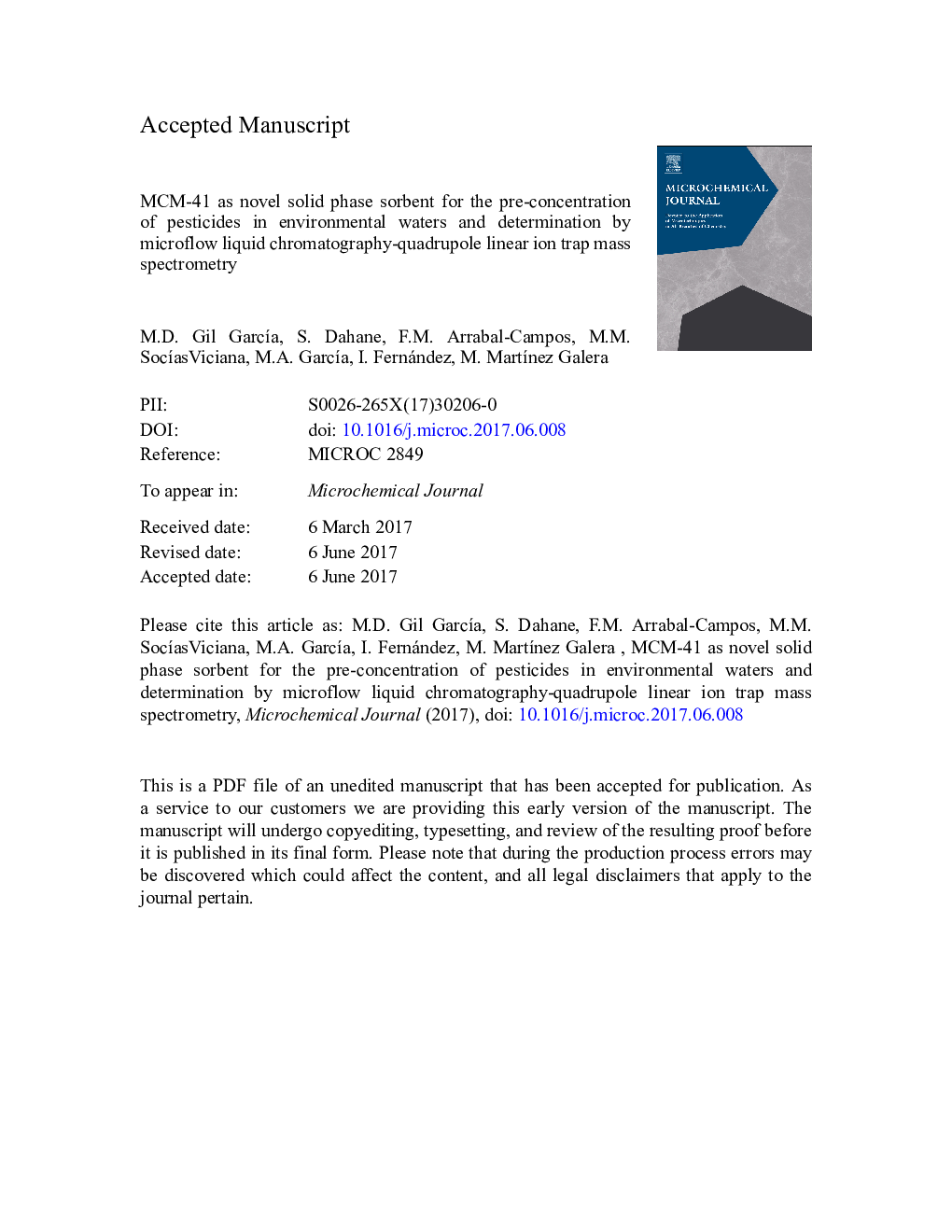| Article ID | Journal | Published Year | Pages | File Type |
|---|---|---|---|---|
| 5139114 | Microchemical Journal | 2017 | 43 Pages |
Abstract
The present work describes a novel solid phase extraction method based on the MCM-41 sorbent for the pre-concentration of eight pesticides with different polarity (including organophosphates, carbamates and triazoles) in environmental waters. A microflow liquid chromatography-quadrupole linear ion trap mass spectrometer was used for the determination and extra-confirmation of the pesticides in the water. Variables affecting the retention (pH and ionic strength) and elution (type and volume elution solvent) of the analytes, the sorbent amount and the breakthrough volume were optimized. The effect of the matrix components in the response of the pesticides was investigated in two types of environmental water (river and dam waters). Signal suppression, which was found in all cases depends on the analyte and the kind of the sample; therefore, quantification was carried out using the standard addition approach. Detection and quantification limits achieved in environmental samples were lower than 0.01 μg Lâ 1 and 0.05 μg Lâ 1, respectively (with the exception of cymoxanil in dam water, which showed a quantitation limit of 0.16 μg Lâ 1). Accuracy and precision in environmental samples, at two concentration levels, ranged from 65% to 126% (relative standard deviation â¤Â 14%), except for methomyl with recoveries lower than 60%. The method developed herein was applied to the analysis of several environmental waters from Spain in which pesticides were not found in any case. Diffusion NMR methods and 13C CP/MAS NMR were applied in order to establish that MCM-41 selectively interacts in different extent with pesticides of different polarity such as cymoxanil or phosalone.
Related Topics
Physical Sciences and Engineering
Chemistry
Analytical Chemistry
Authors
M.D. Gil GarcÃa, S. Dahane, F.M. Arrabal-Campos, M.M. SocÃasViciana, M.A. GarcÃa, I. Fernández, M. MartÃnez Galera,
